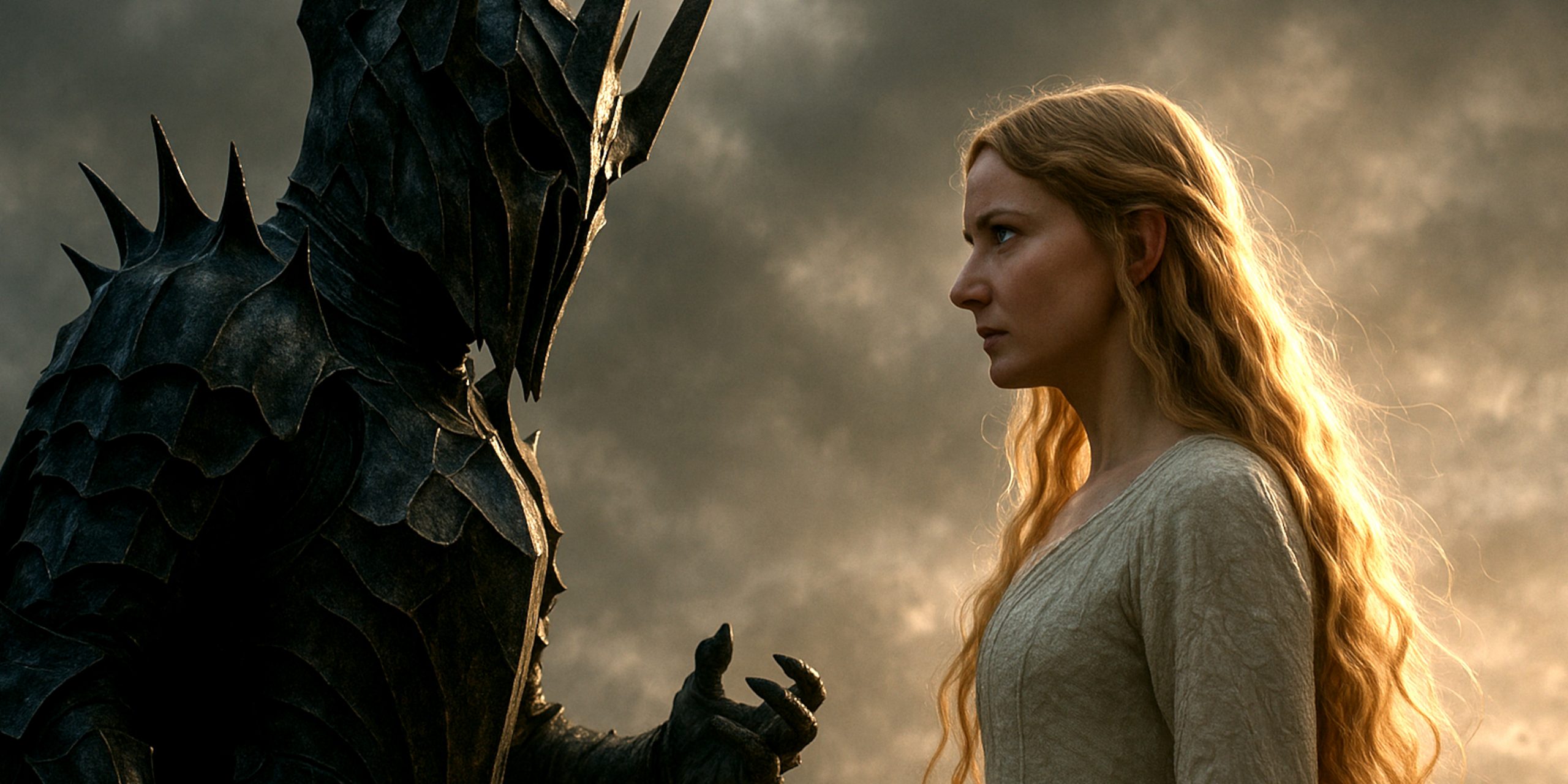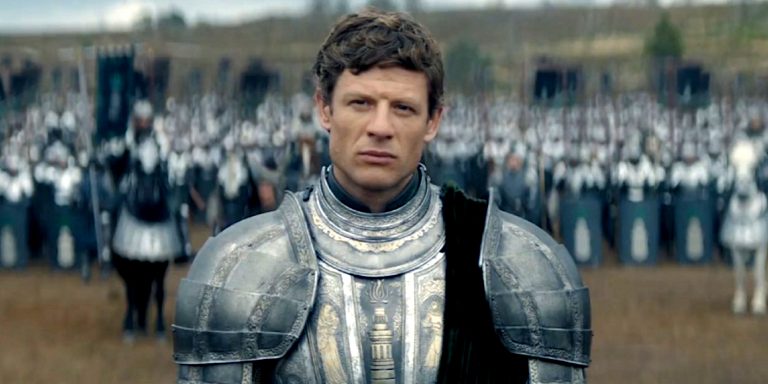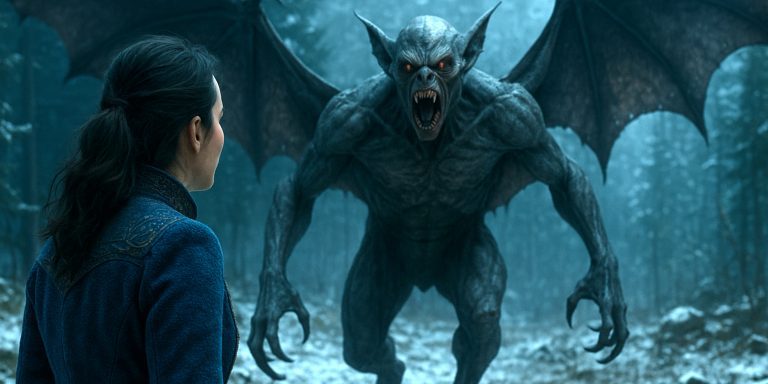
The ongoing tension between Galadriel and Sauron, as portrayed in The Rings of Power, draws inspiration from Tolkien’s wider legendarium but also deviates from it significantly. In Tolkien’s writings, their relationship is more nuanced and indirect than the show suggests. This article examines the historical lore surrounding both characters, how they truly intersect in the Second and Third Ages, and contrasts this with Amazon’s adaptation.
Galadriel in the Lore
Galadriel is one of the oldest and most powerful Elves remaining in Middle-earth by the time of The Lord of the Rings. Born in Valinor during the Years of the Trees, she was among the Noldor who rebelled against the Valar and came to Middle-earth in pursuit of Morgoth. Over time, she grew in wisdom, resisting the corruption and pride that tainted many of her kin.
By the Second Age, she was a prominent leader among the Elves. Although she was not directly involved in war councils against Sauron early on, she played a crucial role in resisting his influence. Galadriel was instrumental in establishing realms such as Lothlórien and later provided guidance to those resisting Sauron’s spread.
She did not wield military power so much as spiritual strength. With her Ring of Power, Nenya, she preserved and defended Lothlórien, creating a bastion of peace and resistance during Sauron’s growing dominance.
Sauron in the Lore
Sauron began as a Maia, a lesser divine spirit in service to Aulë, but he turned to Morgoth and became his most loyal lieutenant. After Morgoth’s defeat at the end of the First Age, Sauron repented briefly but ultimately returned to evil.
In the Second Age, Sauron disguised himself as Annatar, the “Lord of Gifts”, and manipulated the Elves into forging the Rings of Power. Galadriel, however, distrusted him from the outset. According to Tolkien’s Unfinished Tales, she warned against his growing influence in Eregion, but her counsel was not heeded until it was too late.
Sauron’s war with the Elves following the forging of the rings culminated in the destruction of Eregion. Despite this, Galadriel’s own power and foresight kept her and her people safe. She was never manipulated by Sauron, nor did she interact with him on familiar or personal terms.
How They Interact in the Lore
Crucially, Galadriel and Sauron never share a direct confrontation in the written works. Their conflict is ideological and strategic. Galadriel represents preservation, wisdom, and resistance to domination. Sauron seeks order through control and domination, viewing himself as a benevolent ruler whose methods justify the ends.
Their opposition is clearest through the Ring-bearers. Sauron’s power is tied to the One Ring, while Galadriel’s power in Lothlórien comes from Nenya, one of the Three Elven Rings made without Sauron’s direct influence. She hides her power from him, and he never manages to conquer her realm.
When Frodo offers her the One Ring in the Third Age, Galadriel passes the ultimate test. She chooses to remain Galadriel, rather than become a dark queen. This moment reflects her lifelong resistance to the kind of power Sauron represents.
Galadriel and Sauron in The Rings of Power
Amazon’s The Rings of Power reimagines their relationship with much more direct contact. The show casts Galadriel as a warrior commander obsessed with hunting Sauron, even before his identity is revealed. She is portrayed as one of the few who believes he still poses a threat after Morgoth’s fall.
Halbrand, who is later revealed to be Sauron in disguise, travels closely with Galadriel for much of the series. Their interactions are frequent, personal, and at times intimate in tone. The series introduces a kind of psychological chess match, with Sauron trying to sway Galadriel to his side through appeals to order and power.
This portrayal is not drawn directly from Tolkien’s writings. While the showrunners argue that it explores “what could have happened,” the notion of Galadriel being deceived by or emotionally entangled with Sauron is a modern invention.
Key Differences Between Lore and Show
| Aspect | Tolkien’s Lore | The Rings of Power (TV series) |
|---|---|---|
| Relationship | Indirect and ideological | Personal, with emotional and psychological tension |
| Galadriel’s Role | Wise leader, Ring-bearer, spiritual force | Warrior, commander, obsessive hunter |
| Sauron’s Disguise | Annatar, deceives the Elves in Eregion | Halbrand, travels with Galadriel incognito |
| Knowledge of Sauron | Galadriel suspects Sauron early but avoids him | She befriends him unknowingly |
| Direct Confrontation | None | Multiple scenes and confrontations |
Does the Show Undermine Galadriel?
One of the main criticisms is that the adaptation makes Galadriel more reactive and less discerning. In the source material, she is revered for her wisdom and foresight. Her rejection of the One Ring is powerful precisely because she is not easily manipulated. The show’s depiction suggests she was almost seduced by Sauron’s charisma, which some see as a diminishment of her character.
However, others argue the show is exploring her arc earlier in life, portraying a version of Galadriel still struggling with grief, guilt, and vengeance. Whether this choice enriches her backstory or betrays it depends on one’s interpretation of Tolkien’s intent.
The Seven Swords takeaway
In Tolkien’s legendarium, Galadriel and Sauron are opposing forces, but they never engage directly in the way the show depicts. Her strength lies in insight and resistance, not physical confrontation. Sauron, for his part, fears the Three Elven Rings and never gains control over them.
The Rings of Power offers a reimagined version where the battle between them plays out in more overt ways. While the show draws from the broader themes of Tolkien’s world, it takes liberties with their relationship for dramatic effect. Whether this adds or subtracts from the legend depends on what the viewer values: fidelity to the text, or emotional reinterpretation.
Watch the season 2 trailer:



